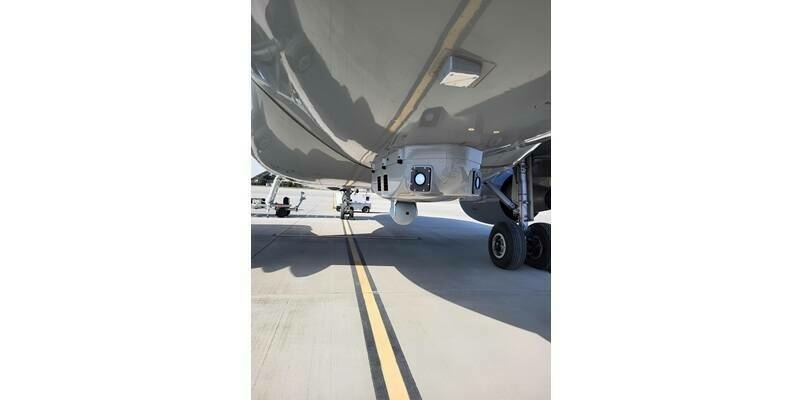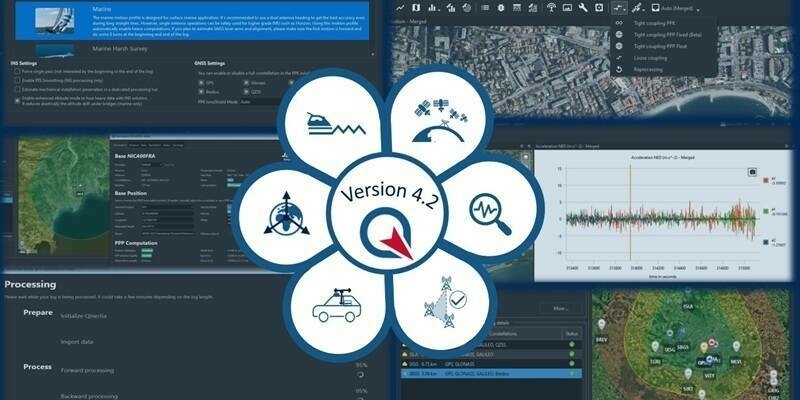Steep underwater walls are often important to investigate for multiple scientific end users such as biologists and geologists, as well as professionals in industrial sectors. However, surveying and mapping of such walls has been challenging due to technical limitations.
Using a Nortek 1MHz DVL, researchers at the Centre for Autonomous Marine Operations and Systems (NTNU AMOS) have now developed an ROV-based system for efficient, high-quality visual mapping of a steep underwater surface. This is of significant benefit for the research community in general.
“Most ROV operations today are heavily reliant on experienced pilots. Being able to automate the control can increase both the efficiency and quality of data collecting, while freeing up time and resources”, explains Stein M. Nornes, research fellow at NTNU AMOS.
Results from a test survey done by researchers at NTNU AMOS have demonstrated how the DVL measurements enabled the Dynamic Positioning (DP) system to efficiently map a vertical underwater wall with still imagery, while maintaining a constant distance to the face of the wall for ideal image quality and coverage.
A tiny DVL made things simpler
Why did researchers at NTNU choose the Nortek DVL for this project? Nornes explains that the compact size of the Nortek DVL was of vital importance.
“For the project, we needed to mount a DVL facing forward on our ROV. With the comparatively tiny Nortek 1 MHz DVL, we only needed a simple mount, and could place the instrument exactly where we wanted it. In comparison, the DVL we already had on the vehicle is large and heavy, which would have required very robust mounting and limited our options with regards to where the instrument could be mounted on the ROV.”
Helping biologists map biodiversity quickly and efficiently
Geir Johnsen is a professor in marine biology at the Department of Biology (NTNU), and is one of the founding partners in Ecotone, a NTNU spin-off company using new optical techniques for mapping and monitoring the marine environment.
He emphasizes that the work that has been done to integrate the DVL in the operation is important for biologists as it helps to improve control of the ROVs that are used in the visual mapping of steep underwater walls.
”To get good data we as researchers need to control speed, pitch, roll and yaw. It is particularly important to control vertical and horizontal movement to get good images of the submarine environment,” Johnsen says.
”Automated control of these robots, for example ROVs, help us run these with greater precision than what a pilot could do, and we can map large parts of the ocean floor quickly and efficiently.” He adds that the DVL gives us very good information on the distance to the bottom.
“This helps us make maps of the biological diversity that are of a very high quality.”
Images:
- Nortek_DVL_1MHz_sideview. The compact size of Nortek’s 1MHz DVL makes for easy integration on ROVs and other systems that depend on precise subsurface navigation.
- Sperre SUB-fighter 30K & Nortek 1MHz DVL - 1. The ROV used in the survey is a Sperre SUB-fighter 30K made for NTNU in 2004. The Nortek DVL is placed in the front of the vehicle.
- Sperre SUB-fighter 30K & Nortek 1MHz DVL 2 The sensor setup with the Nortek DVL mounted between the stereo cameras. 3D-model of a subsurface test area. The finished, textured 3D-model of a subsurface test area (a steep underwater wall).
- Paragorgia Arborea coral © NTNU AUR-Lab 1 The Paragorgia Arborea coral (pink, center image) is one of the species the biologists wish to map in Trondheimsfjorden. (Photo: © NTNU AUR-Lab)
Subscribe to our newsletter
Stay updated on the latest technology, innovation product arrivals and exciting offers to your inbox.
Newsletter

